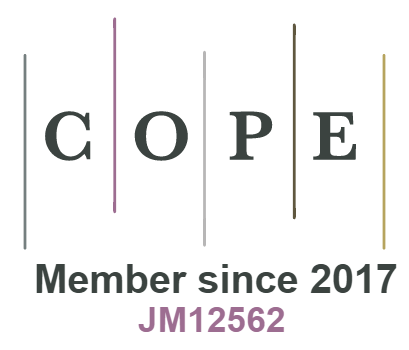Synthesis Procedures for Silver Nanoparticles
DOI:
https://doi.org/10.18034/ei.v2i2.202Keywords:
Silver Nanoparticles, Surface Plasmon, UV-Vis Absorption Spectrum, Chemical Bath Technique, reverse micelles process, salt reduction, microwave dielectric heating reduction, ultrasonic irradiation, radiolysis, solvo-thermal synthesis, electrochemical synthesisAbstract
This article gives some proposals on how to grow silver nanoparticles using different methods. Dilute silver salts are recommended as the metal precursor starting solutions. The formation of the silver nanoparticles is to be monitored using UV-Vis absorption spectroscopy so as to reveal the formation of silver nanoparticles and how they will exhibit surface plasmon absorption maxima at 418-420 nm from the UV–Vis spectrum. The Mie light scattering theory will be applied and the experimental results analyzed to show the diameter of silver nanoparticles in colloidal solution. Energy-dispersive spectroscopy (EDX), X-ray diffraction (XRD), transmission electron microscopy (TEM) and UV–Vis spectroscopy are proposed to be used to characterize the formed silver nanoparticles obtained. The energy-dispersive spectroscopy (EDX) of the nanoparticles dispersion will confirm the presence or absence of elemental silver signal peaks. The size and morphology of the formed silver nanoparticles will be determined by transmission electron microscopy. The synthesized silver nanoparticles will be structurally characterized by using X-ray diffraction and transmission high-energy electron diffraction (HEED) and the peaks in the XRD pattern will be compared to the standard values of the face-centered-cubic form of metallic silver (ICCD-JCPDS card no. 4-0787).
Downloads
References
For 2003 International Technology Roadmap for Semiconductors (ITRS), see website http://public.itrs.net/.
G. Stix, Little big Science, Scientific American Sept. 2001, p.32, and the articles following this one.
G. Timp (ed.), Nanotechnology (Springer, New York, 1999).
G.A. Ozin, A.C. Arsenault, Nanochemistry: A chemical approach to nanomaterials (RSC Publishing, 2005).
H.-S.P. Wong, D.J. Frank, P.M. Solomon, C.H.J. Wann, J.J. Welser, Nanoscale CMOS, Proc. IEEE 87, 537 (1999).
Hari Singh Nalwa (ed.), Nanostructured materials and nanotechnology (Academic Press, London, 2002).
J. Birnbaum, R.S. Williams, Physics and the information revolution, Phys.Today Jan. 2000, p.38.
M.S. Dresselhaus, I.L. Thomas, Alternative energy technologies, Nature414, 332 (2001).
P. Moriarty, Nanostructured materials, Rep. Prog. Phys.64, 297 (2001).
P.M. Solomon, Device innovation and material challenges at the limits of CMOS technology, Annu. Rev. Mater. Sci.30, 681 (2000).
R. Compañó, L. Molenkamp, D.J. Paul, Technology Roadmap for Nanoelectronics, http://nanoworld.org/NanoLibrary/nanoroad.pdf.
R.P. Feynman, in H.D. Gilbert (ed.), Miniaturization (Reinhold, New York, 1961), pp. 282-296.
R.W. Keyes, Fundamental limits of silicon technology, Proc. IEEE 89, 227 (2001).
The Royal Society, Nanoscience and nanotechnologies: opportunities and uncertainties, http://www.nanotec.org.uk/finalReport.htm (July 2004).
Y. Tauret al., CMOS scaling into the nanometer regime, Proc. IEEE 85, 486 (1997).
--0--
Published
Issue
Section
License
Engineering International is an Open Access journal. Authors who publish with this journal agree to the following terms:
- Authors retain copyright and grant the journal the right of first publication with the work simultaneously licensed under a CC BY-NC 4.0 International License that allows others to share the work with an acknowledgment of the work's authorship and initial publication in this journal.
- Authors are able to enter into separate, additional contractual arrangements for the non-exclusive distribution of the journal's published version of their work (e.g., post it to an institutional repository or publish it in a book), with an acknowledgment of its initial publication in this journal. We require authors to inform us of any instances of re-publication.









